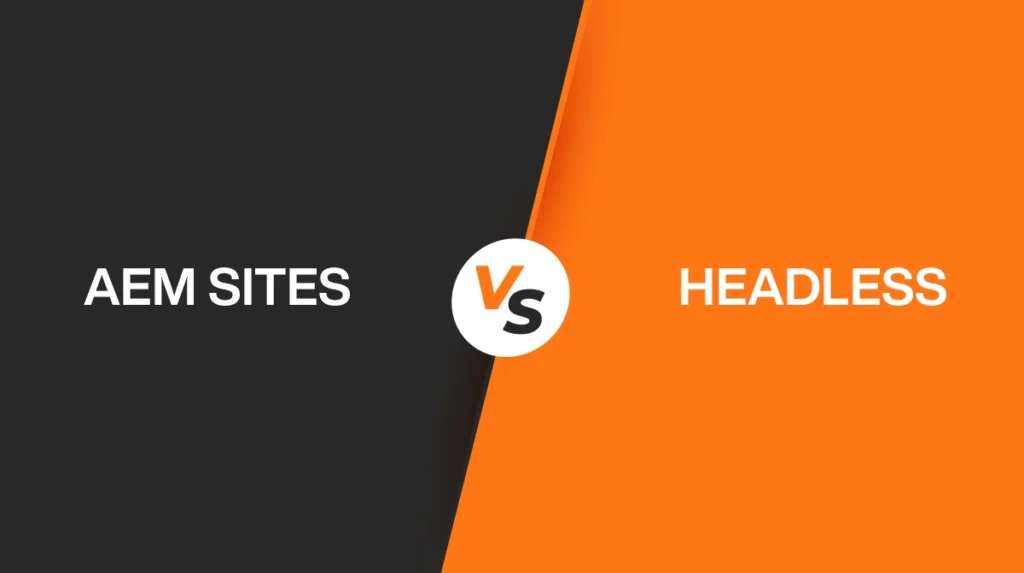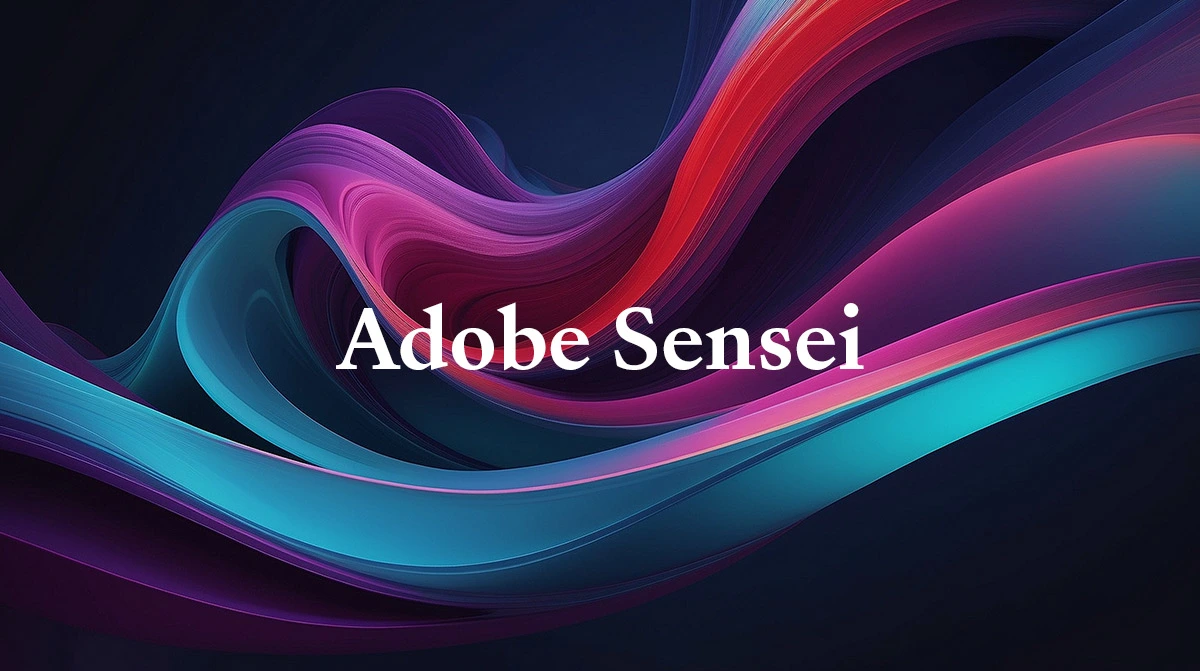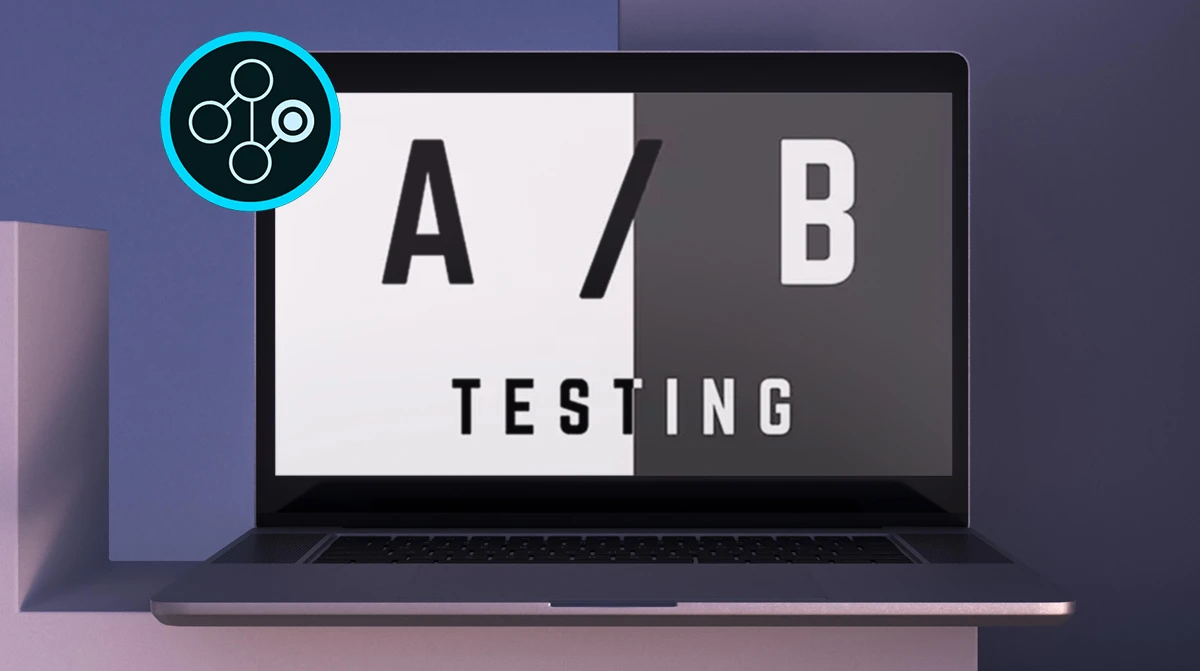The digital landscape has transformed dramatically, evolving from simple websites to a vibrant ecosystem of mobile apps, smartwatches, kiosks, IoT devices, and AI chatbots. Companies use powerful Digital Experience Platforms (DXPs) like Adobe Experience Manager (AEM) to navigate this complexity.
A key decision when using AEM is whether to stick with the traditional Headful (Full-Stack) approach or adopt the more flexible AEM Headless option for content delivery. This choice can significantly impact how brands engage with their audiences. What will you decide?
Your decision in 2025 will determine how quickly you reach customers, your long-term costs, and your ability to meet customer expectations across all shopping channels. This guide offers a simple explanation of both options to help you choose the best path for your business.
Section 1: Decoding the Two Architectures (The Head vs. The Body)

To understand the debate, we first need to define the “head.”
AEM Sites (The Headful/Full-Stack Approach)
In the classic AEM Sites model, the Content Management System (CMS) manages both the content (the body) and the presentation layer (the head).
What it is: A single, integrated platform where the content and the code that displays it (HTML, CSS, JavaScript) live together.
The Analogy: It’s like an all-in-one desktop computer. The operating system, the applications, and the screen are all in one box. It’s powerful, and everything works perfectly together out of the box.
The Content Author’s Experience: This is the model marketing teams love. Authors use the famous WYSIWYG (What You See Is What You Get) Page Editor. They can drag-and-drop components, see exactly how the page looks as they edit it, and manage the final presentation without needing a developer for every change.

| AEM Sites Key Benefits (Headful) | AEM Sites Key Drawbacks (Headful) |
| Superior Authoring Experience | Limited Channel Reach (Best for traditional web) |
| In-Context Editing (WYSISYG) | Frontend Technology Lock-in (Tied to AEM stack) |
| Unified Governance and Preview | Slower Performance/Scalability (Delivery tied to CMS) |
| Deep, Out-of-the-Box Integrations | Higher Development Cost and Complexity |
AEM Headless (The Decoupled Approach)
In the headless model, the CMS manages only the content (the body) and delivers it to any separate presentation layer (the head) using APIs.
What it is: AEM is used purely as a content repository, managing structured content via Content Fragments. The final output, the website, the app, or the kiosk display, is built using modern frontend tools (like React, Vue, or Next.js) that pull the content from AEM via GraphQL or REST APIs.
The Analogy: It’s like a central cloud server that distributes raw data to many devices (laptop, tablet, phone, smart speaker). The central server only cares about the data; each device manages its own screen (or lack thereof).
The Content Author’s Experience: Authors create content in a structured, form-based interface, focusing purely on text, images, and data. They sacrifice the live, in-context preview of the final webpage, but they can now reuse the content everywhere.
| AEM Headless Key Benefits (Decoupled) | AEM Headless Key Drawbacks (Decoupled) |
| Accurate Omnichannel Delivery (API-driven) | Loss of In-Context Authoring (Harder for marketing) |
| Maximized Frontend Flexibility (Use any modern stack) | Increased Complexity in Tooling (Requires a separate frontend) |
| Superior Performance and Scalability (Decoupled layers) | Requires Strong Content Modeling Governance |
Section 2: Enterprise Scenarios – When to Choose Which Architecture
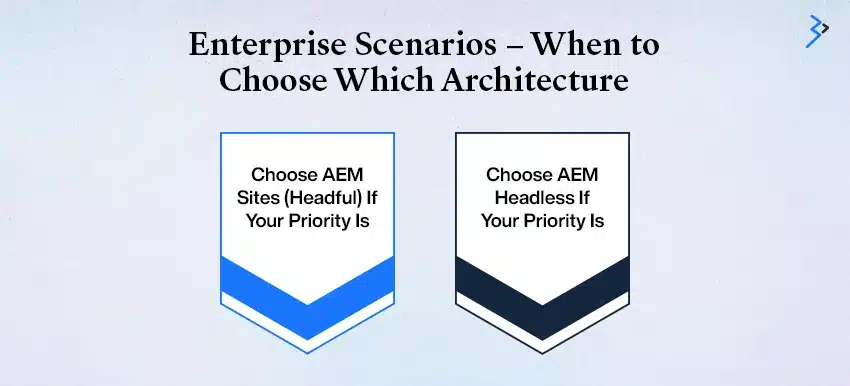
The correct choice is determined by your business priorities, not by hype. Your architecture must align with your most critical needs for the next 3-5 years.
Choose AEM Sites (Headful) If Your Priority Is:
Marketing Autonomy and Speed of Campaign Launch (WYSISYG):
If you aim to help non-technical marketing teams easily create and launch landing pages and promotions daily without needing developers.
The WYSIWYG editor is an enormous time-saver for campaigns where the page layout is as important as the content.
A Single, Complex Web Property with Deep AEM Features:
If you run a large-scale website, consider using AEM’s features like Adobe Analytics Services and Adobe Target integration, workflow management, and Core Components. In that case, the Headful approach offers the most seamless, out-of-the-box experience.
Governance and Standardized Design:
Enforcing the use of standardized components is crucial to maintaining consistent branding across all pages. AEM’s headful structure effectively facilitates this centralized control.
Choose AEM Headless If Your Priority Is:
True Omnichannel and Multi-Device Reach:
A headless approach lets you share content easily across various platforms, like websites and apps. You create the content once, and an API delivers it everywhere, simplifying the process.
Maximum Performance and Frontend Innovation:
A slow website can lead to revenue loss, especially for online stores. Developers can use modern tools like Next.js and React to improve loading times by separating the front and back end. Utilizing a microservices architecture leads to better management and more efficient updates.
Cost and Time Savings in Multi-Channel Development:
Developing separate frontends for every channel is faster when the content is centralized and ready via API. Studies show that a headless-first approach can speed up time-to-market for digital innovations. This streamlined method helps organizations overcome content challenges and power future growth.
Decoupled Scaling:
Suppose your content authoring needs (backend) are stable, but your customer traffic (frontend) is highly variable or prone to spikes (e.g., flash sales, major news events). In that case, the decoupled architecture enables you to scale the delivery system independently of the CMS, saving considerable infrastructure costs.
Section 3: The Hybrid Approach – Having It All
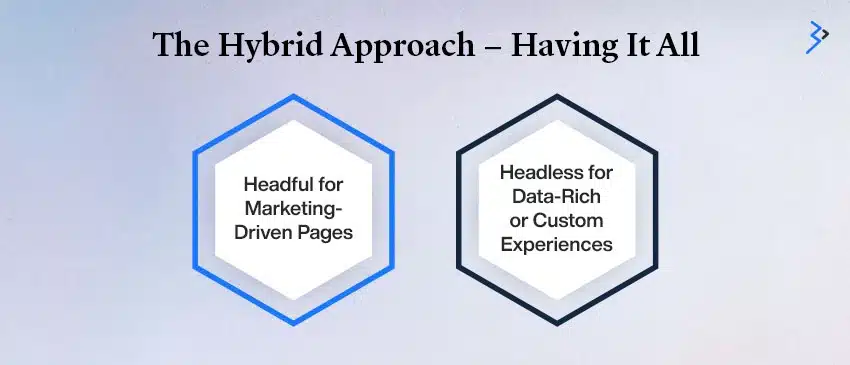
In 2025, the reality for most large enterprises is that the choice is rarely binary. Many are adopting a Hybrid AEM approach, leveraging the strengths of both models in one platform:
Headful for Marketing-Driven Pages: Standard web pages and content requiring visual edits and quick campaign changes are managed using traditional AEM Sites (WYSIWYG). The approach promotes effective content management.
Headless for Data-Rich or Custom Experiences: Structured Content Fragments organize content for mobile apps, dashboards, or eCommerce checkouts. The system sends the fragments through an API.
AEM Cloud Service effectively manages hybrid environments by providing powerful tools for visual editing and API-first delivery. A global enterprise can maintain governance while achieving flexibility in its channels.
Section 4: The Enterprise Imperative – The Data Behind the Decision
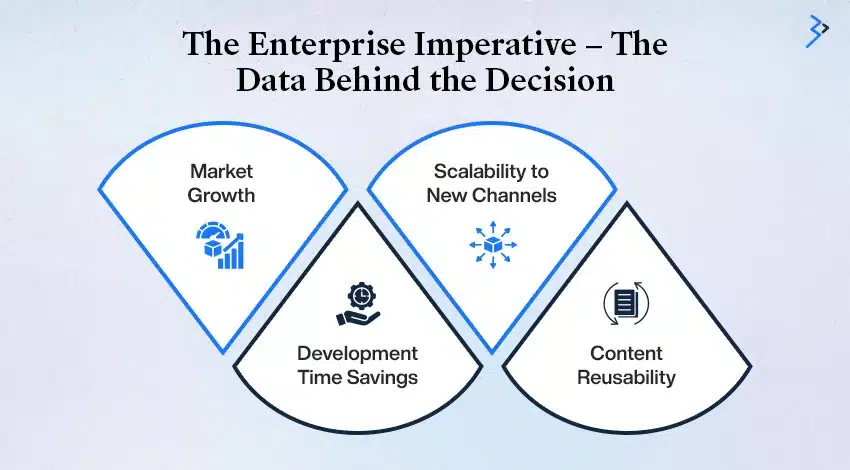
The move toward decoupled content management is not a trend; it’s a strategic shift driven by measurable business results. For any enterprise evaluating a move to AEM Headless, the following statistics highlight the massive ROI of flexibility:
Key Statistics for the Enterprise Decision
Market Growth
- Statistic: According to Growth Market Reports, the global headless CMS market is projected to expand at a CAGR of 21.7% between 2025 and 2033.
- Business Implication: The industry is rapidly standardizing on headless architecture as the foundation for modern DXPs.
Development Time Savings
- Statistic: According to an IJFMR survey of organisations adopting headless architectures, they reduced development time for new digital experiences by 35%.
- Business Implication: Developers can use their favorite modern tools (React, Vue, Next.js) without being slowed down by the legacy CMS environment.
Scalability to New Channels
- Statistic: A WP Engine report shows that 79% of organizations using headless CMS rate their content delivery scalability as “good,” compared to 62% for traditional CMS users.
- Business Implication: The content is “future-proofed,” ready to power any device that emerges next (e.g., VR/AR).
Content Reusability
- Statistic: According to Contentstack’s 2024 case study of Dawn Foods, implementing a MACH-based (Microservices, API-first, Cloud-native, Headless) architecture enabled the company to reduce content-publishing times by 80%.
- Business Implication: When content is structured and reusable, authors spend far less time duplicating work across different platforms.
These numbers confirm a critical truth: Flexibility is the new efficiency. By separating content from presentation, you are not just changing your architecture but fundamentally reducing the friction between your marketing and technology teams.
Conclusion: Making the Right Choice with Confidence
For a large-scale enterprise in 2025, the choice between AEM Sites and AEM Headless boils down to this:
AEM Sites (Headful) is the best choice for a traditional website, providing secure and governed marketing autonomy for visual editing.
Imagine a world with websites, mobile application development, IoT devices, and custom portals. The key goals are smooth integration, fast performance, and easy adaptability. The Hybrid AEM Headless model is crucial to achieving these goals.
Selecting and implementing the appropriate architecture in Adobe Experience Manager requires a knowledgeable partner. Expertise in translating complex decisions into business outcomes is essential for reducing time to market and optimizing Total Cost of Ownership (TCO).
As trusted Adobe Partners, Brainvire helps you create powerful digital experience platforms. We upgrade legacy Adobe Experience Manager setups and offer flexible, modern solutions, ensuring your business delivers seamless customer experiences across all channels.
FAQs:-
AEM Sites (Headful) manages content and presentation in one platform, which is ideal for marketers who prefer visual editing. AEM Headless separates content from design via APIs, enabling fast, scalable delivery across web, mobile, and IoT channels.
Enterprises are adopting headless and hybrid AEM models for faster publishing, omnichannel reach, and better scalability. As per Growth Market Reports (2024), the headless CMS market is projected to grow at a 21.7% CAGR through 2033, proving its enterprise value.
No. AEM Headless still empowers marketing teams to create modular content through content fragments. The hybrid model combines visual authoring with developer flexibility for modern front-end experiences.
Choose AEM Sites (Headful) when you prioritize visual editing, brand consistency, and quick campaign updates. It’s ideal for teams using WYSIWYG editors, AEM Core Components, and Adobe integrations like Analytics and Target.
Brainvire’s certified AEM experts modernize legacy systems and deliver Headless or hybrid architectures that enhance omnichannel performance, reduce TCO, and accelerate time-to-market.
Related Articles
-
Adobe Sensei: Your Complete Guide to the Ultimate Marketing Tool
Introduction Creating personalized experiences for every customer who visits your eCommerce store can be tiresome. Not to mention an arduous task that requires lots of effort and the right tools.
-
What is the Navigation in Adobe Experience Manager (AEM)?
Summary Delivering a seamless user experience is crucial for evolving businesses! Today, more than ever, customers are inclined towards the look and feel of a website before trusting the brand.
-
Beyond A/B Testing: Advanced Experimentation and Optimization with Adobe Target
In a digital-first world, brands no longer have the luxury to rely on intuition or generic content strategies. The era of personalization is here, and users expect every click, scroll,

